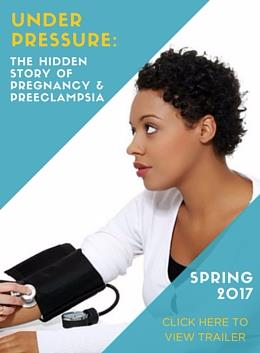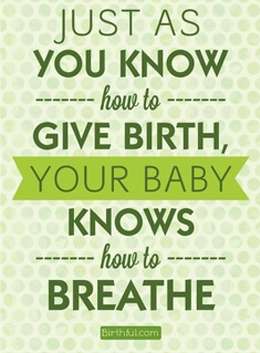By: Andrea D’Eramo
Teenagers are curious – especially about sex. They also have sex. The majority of high school students in the United States – 64% – will have sex before they graduate high school. But whether they are educated about sex itself, or know how to protect themselves from transmittable infections and pregnancy are entirely different things.
As students head back to school, BetterDoctor crunched the numbers to see which states have the most unprotected sexually active high school students across the United States. The study illustrates where teenagers need the most educational support when it comes to sex and protecting themselves from transmittable infections and unwanted pregnancies.
We at BetterDoctor encourage everyone to take control of their health so we consulted with health experts about the subject. What did they have to say? Basically: Talk to your kids – often, teach them about their changing bodies and get them the healthcare they need to keep themselves safe. Read more about their advice, when to talk to your kids, what to talk about, and see where high schoolers need the most attention in our study below.
Where are students the most sexually active?
To gauge the number of sexually active students in each state, we looked at the CDC’s Youth Behavior Risk Survey data that’s compiled every other year. The latest data available is from 2013 and is the result of thousands of surveys completed by high school students around the country. We included figures about how many students reported ever having sexual intercourse and how many are currently sexually active to illustrate trends on a state-by-state basis.
Which states have the most unprotected sexually active high school students?
Going beyond sexually active high school students, we wanted to see where students were protecting themselves from pregnancy and transmitted infections – and where they weren’t. Some sexually transmitted infections and diseases can stay with people their whole lives, so taking actions to avoid infections or unwanted pregnancy is very important to student health. Again for this metric, we used data from the CDC.
What is the teen birth rate in each state?
To gauge how unprotected sex affects younger Americans, we included the teen birth rate for each state – again using 2013 data. This data can include births from some teenagers who have graduated or who are no longer in high school because it includes teens age 15-19. All this information was collected by The National Campaign.
What we found:
· States in the south and southwest had the highest rates of students not using any form of birth control
· States in the northeast had the lowest birth rates and very few student not using any birth control
· States in the midwest had relatively high rates of zero birth control use among sexually active high school students, but had relatively low birth rates
· Massachusetts and New York, which fund minors’ confidential access to contraceptives had two of the lowest birth rates
1. Texas: Texas had the most unprotected sexually active high school students in the country in 2013, with 19% of sexually active students not using any form of birth control at all. That resulted in 37,525 girls between 15 and 19 having a child in Texas that year – the fourth highest birth rate in the nation. The good news is that number reflects a 48% decrease since the peak in teen birth rate, back in 1991. Of those births to teenage mothers, 8,605 were to white mothers, 4,957 were to non-hispanic black mothers, 24,166 were to hispanic mothers, 139 to American Indian/Alaskan Natives and 297 to Asian/Pacific Islander mothers.
2. Tennessee: In Tennessee, 18.8% of sexually active high school students reported not using any form of birth control during their last sexual encounter – this led to 7,105 births to teenage mothers between 15 and 19 that year. Fortunately, like Texas which also saw a steep drop since the early 1990s, these numbers represent a 54% decrease in the teen birth rate since 1991. The teen birth rate and high rates of non-use of contraceptives extend beyond the high school years. Though not all unplanned pregnancies are the result of nonuse of birth control, many are. Among women ages 15-44, 56% of all pregnancies in Tennessee in 2010 were unplanned.
3. Arkansas: Arkansas took the top spot for teen birth rate in 2013, with 4,155 teen births (43.5 births per 1,000 girls age 15-19). As a state, their sexually active high school students also had one of the highest rates of not using birth control. The birth rate is high, but it’s still a 27% decrease since its peak in 1988 – which is good news for young girls who want to avoid teenage parenthood.
4. Arizona: Arizona has seen one of the steepest drops in their teen birth rate since the late 80’s and early 90s. Since its peak in 1991, the teen birth rate in Arizona has gone down a whopping 58% – making it the tenth highest birth rate in the country. In 2013, there were 7,232 teen births (33.1 births per 1,000 girls) in the state. Beyond the high school years, the majority of pregnancies in Arizona to women between 15 and 44 are unplanned – currently at a rate of 51%.
5. Missouri: Missouri made the top 5 list of states with the most most unprotected sexually active high school students in America because 16.2% of all sexually active students reported not using any form of birth control during their last encounter. In 2013, that resulted in 5,814 teen births (30 births per 1,00 girls). Fortunately for teens in the state, that birth rate is 53% down from its high in 1991.
When parents should have ‘The Talk’:
When it comes to ‘the talk’ many parents are at a loss for when to have it, what it should entail and what to cover. We talked to the experts to hear their advice for parents.
As far as the ‘right’ time to have the talk, Dr. Kate McCracken, Assistant Professor of Obstetrics and Gynecology at The Ohio State University Wexner Medical Center, and adolescent gynecology specialist, explains, “This will vary depending on the family – and ideally parents will not have only one ‘talk’. I recommend having several developmentally appropriate discussions as your children grow – begin when children start asking questions about their bodies. Use anatomically correct terms for body parts. Focus on overall health – sexual health, emotional health and physical health. Above all, encourage children to ask questions!”
“Sexuality and sexual images permeate our society through TV, radio and the Internet – plus, of course, peer pressure,” explains Dr. Kecia Gaither, MD, MPH, FACOG, Maternal Fetal Medicine Specialist and Director of Perinatal Outreach at Montefiore Medical Center and Albert Einstein College of Medicine in Bronx, NY. “In order for a child to have the correct knowledge base concerning their anatomy, reproductive biology and sex – particularly safe sex – talking to your children around puberty would be optimal. For girls, the initial talks should come from a female relative, be it her mother or grandmother. For boys, an adult sibling, father or grandfather is best.”
What to cover in ‘The Talk’:
Dr. Kate McCracken says there’s a lot more to talking to your kids about sex than just reproductive health and changes in their bodies. She recommends parents focus on six main areas:
1. Sexual Health– Sexuality, contraception access and options, sexually transmitted infection protection, and abstinence
2. Emotional Health– Dealing with feeling, managing stress, screening for anxiety/and or depression
3. Physical Health– Healthy food choices and getting physical activity daily
4. Body Image– Promoting a healthy body image, encouraging confidence
5. Relationship Safety– Dating, friends, setting limits
6. Pubertal Changes– What is normal and what isn’t concerning pubertal changes and hygiene
It’s important for parents to not avoid conversations they feel uncomfortable having. Education is empowering for kids as they grow up – especially as it relates to their own health.
“By communicating openly and often, you are providing your children with the tools they need to make healthy choices,” explains Dr. McCracken, “Encourage questions! Be present in their lives! Don’t be afraid to have difficult conversations! And take time to learn about the available resources in your community.”
What the experts have to say about talking to your kids about birth control:
As age appropriate talks continue with your kids, Dr. McCracken recommends adding in talks about contraception access and options, as well as educating your kids about sexually transmitted infections – and how to protect themselves from them. Abstinence can also be covered as a part a comprehensive sex education series with your kids. Wherever your own knowledge falls short, consult local community or online resources to keep the conversation going. The more educated kids are, the more protected they can be from STIs or unwanted pregnancies.
Dr. Sally Rafie, a Board Certified Pharmacotherapy Specialist and Pharmacist specializing in sexual and reproductive health explains that the right time to talk with you teens about birth control is around the start of puberty. “Teens can start using birth control any time after they start menstruating or having periods. Ideally, teens should be thinking about what kind of sexual activity, if any, they want to engage in and whether they want to prevent STDs or pregnancy.
To effectively prevent pregnancy, teens will need education on birth control options and how to use them before they start having sex. There are lots of other benefits with birth control, so some teens may take it to help with their acne or painful periods, for example. All birth control methods are generally safe to be used by teens, including intrauterine devices (IUDs), implants, and pills.” Dr. Rafie is also an Assistant Clinical Professor of Health Sciences at UC San Diego’s Skaggs School of Pharmacy and Pharmaceutical Sciences.
Why we did the study:
September is about more than just students going back to school, it’s also Ovarian Cancer Awareness month. Accessing women’s health resources is important to women of all ages – teens included. At BetterDoctor, we’re passionate about helping people find and connect with the best doctors in their insurance networks where they live. Finding women’s health specialists is incredibly important for pregnancy care, cancer detection and reproductive health in general – at BetterDoctor, we’re happy to help patients connect with providers they trust to get the care they need.
We wanted to illustrate that girls across America also need information and care from doctors early in life. During their high school years, that might just be information about body changes, how to protect herself from diseases and infections, or pregnancy if she doesn’t want to have a child yet. Either way, normalizing sexual health care and promoting it from an early age is important to lifelong reproductive health.
Methodology:
We analyzed the latest CDC’s Youth Behavior Riskdatafrom 2013 to see which states have the most high school students having sex and whether they’re using birth control. We also compared those rates to the birth rate to see if they correlated.
For more information on teen pregnancy by state, check out the National Campaign to Prevent Teen and Unplanned Pregnancy’s data here.






